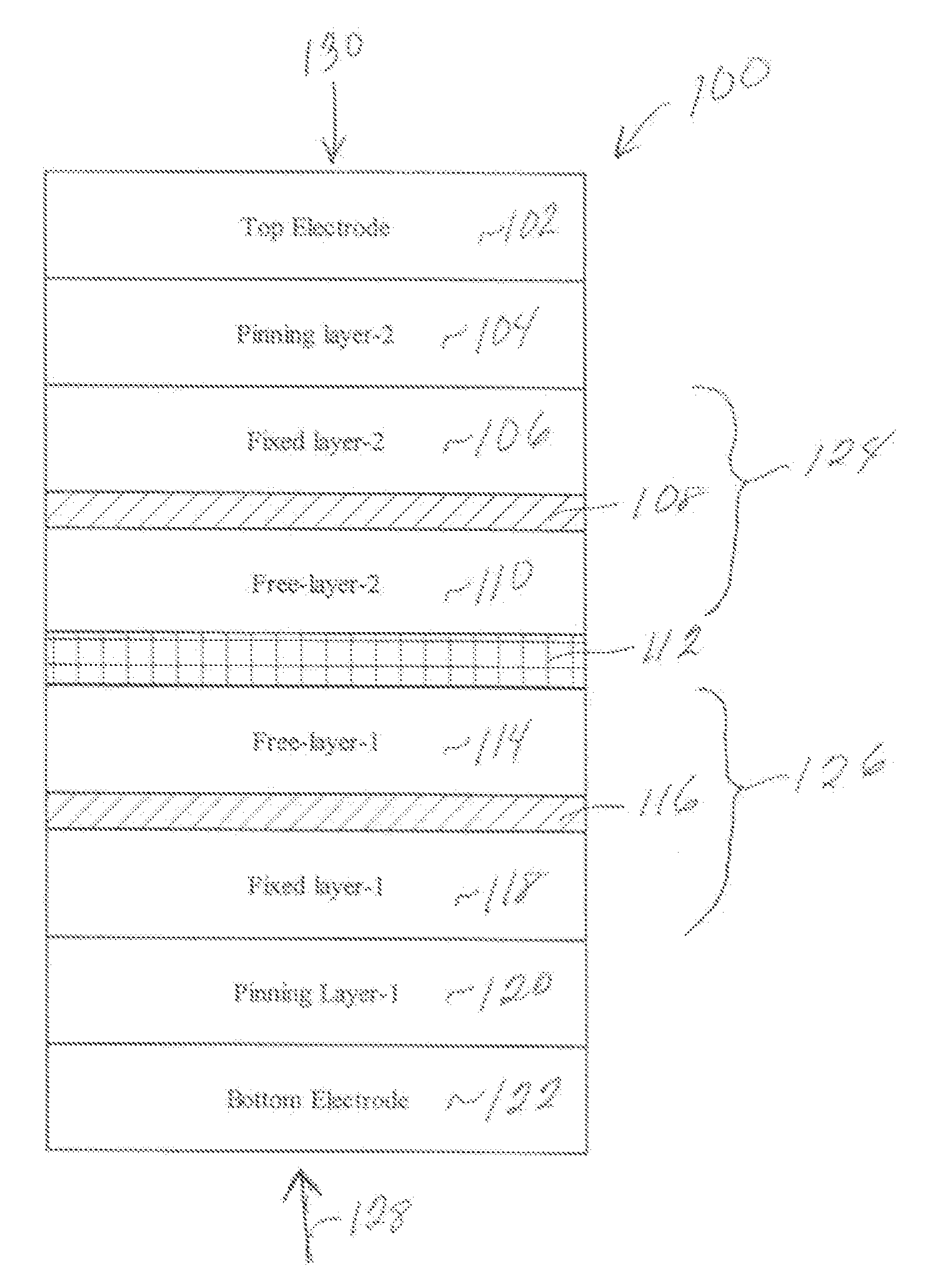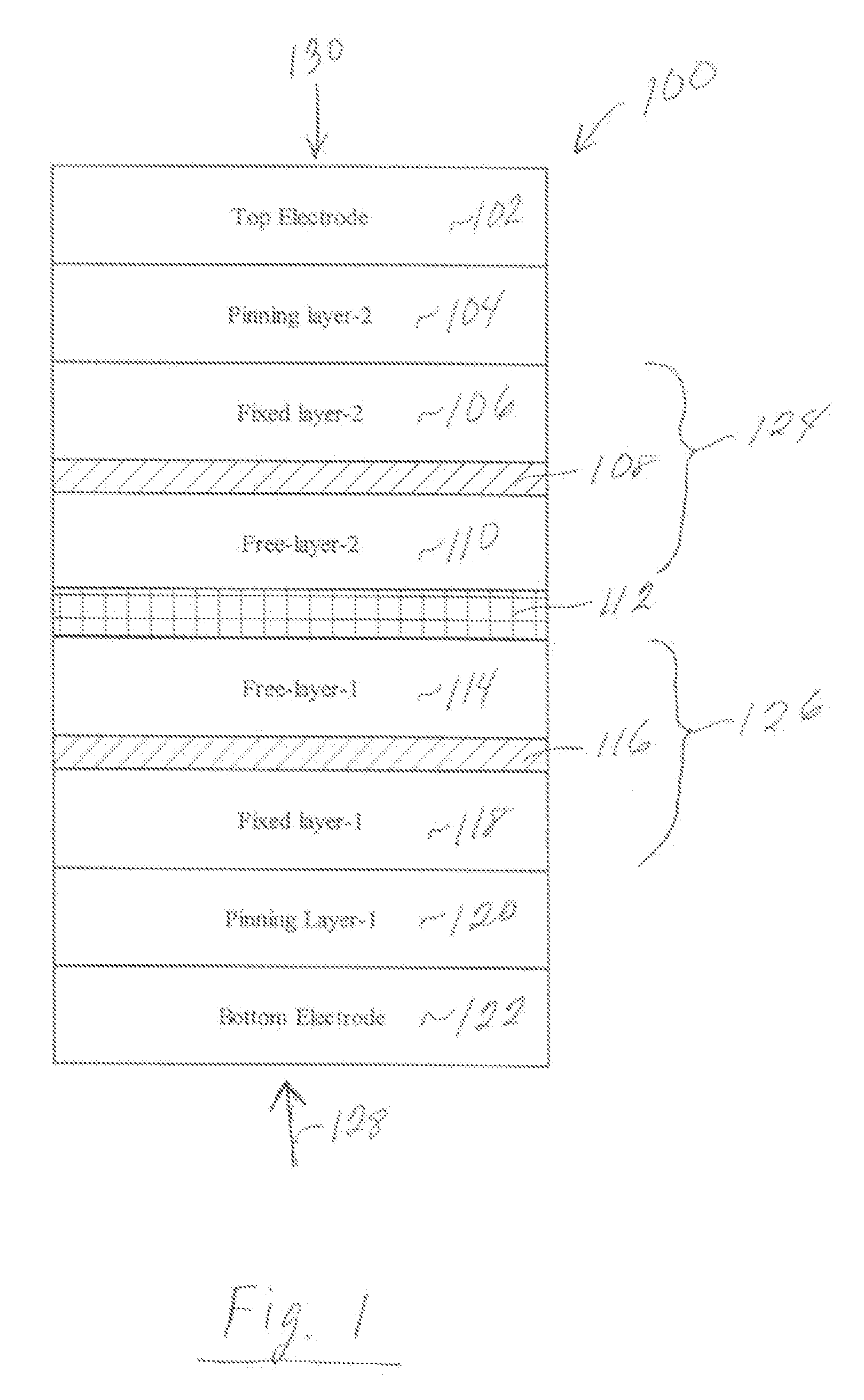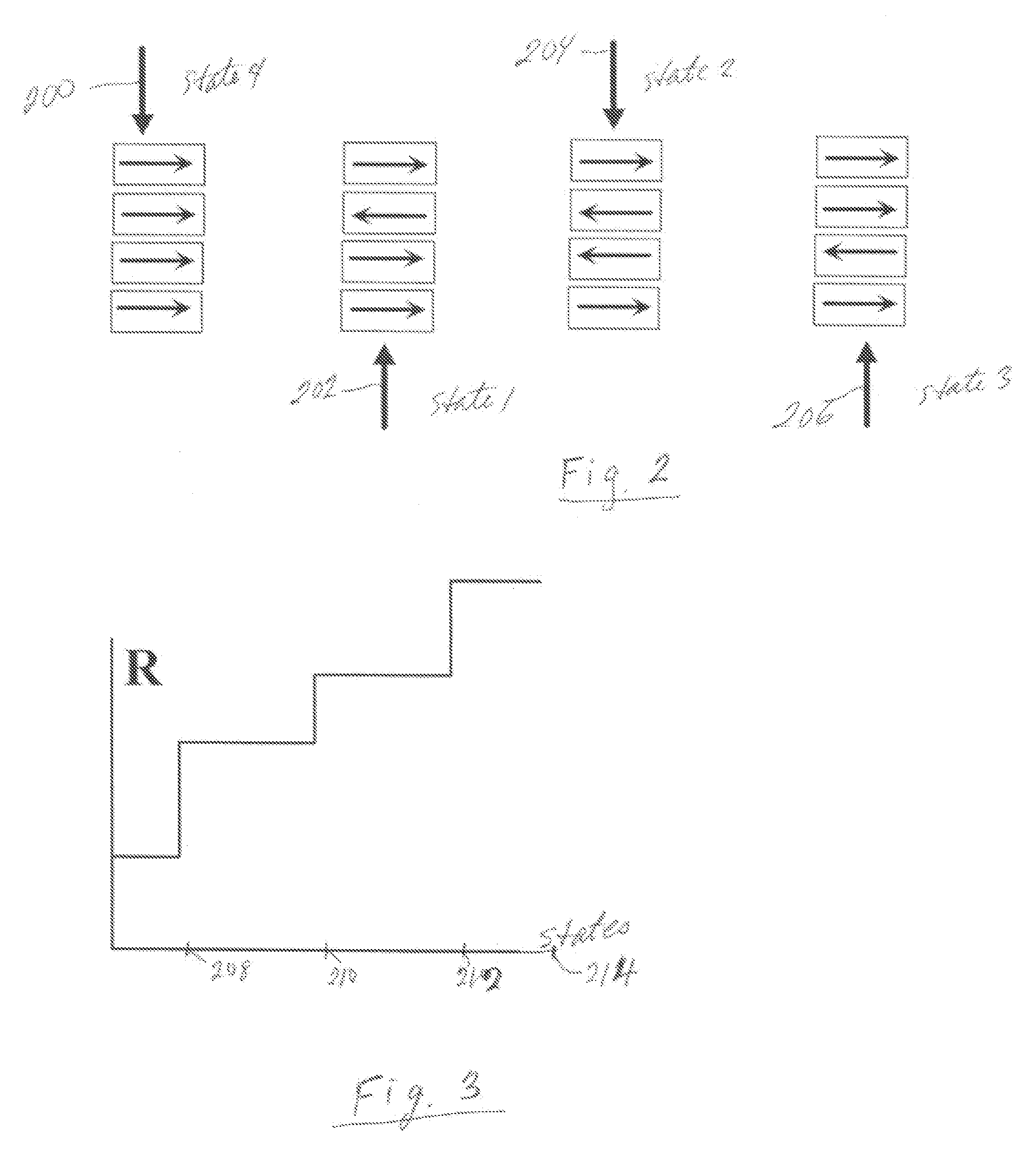High capacity low cost multi-state magnetic memory
a multi-state, high-capacity technology, applied in the field of non-volatile magnetic memory, can solve the problems of large physical size, high power dissipation, and high latency of access to data
- Summary
- Abstract
- Description
- Claims
- Application Information
AI Technical Summary
Benefits of technology
Problems solved by technology
Method used
Image
Examples
Embodiment Construction
[0029]In the following description of the embodiments, reference is made to the accompanying drawings that form a part hereof, and in which is shown by way of illustration of the specific embodiments in which the invention may be practiced. It is to be understood that other embodiments may be utilized because structural changes may be made without departing from the scope of the present invention.
[0030]In an embodiment of the present invention, a multi-state magnetic memory cell is disclosed. In one embodiment of the present invention, a stack of magnetic tunnel junction (MTJ) is formed, each MTJ being formed of at least three layers, a barrier layer formed between a fixed layer and a free layer, each MTJ being separated from another by a conductive layer, the stack forming a multi-state magnetic memory cell for storing at least two bits of digital information.
[0031]Referring now to FIG. 1, relevant layers of a multi-state current-switching magnetic memory element 100 are shown, in ...
PUM
 Login to View More
Login to View More Abstract
Description
Claims
Application Information
 Login to View More
Login to View More - R&D
- Intellectual Property
- Life Sciences
- Materials
- Tech Scout
- Unparalleled Data Quality
- Higher Quality Content
- 60% Fewer Hallucinations
Browse by: Latest US Patents, China's latest patents, Technical Efficacy Thesaurus, Application Domain, Technology Topic, Popular Technical Reports.
© 2025 PatSnap. All rights reserved.Legal|Privacy policy|Modern Slavery Act Transparency Statement|Sitemap|About US| Contact US: help@patsnap.com



